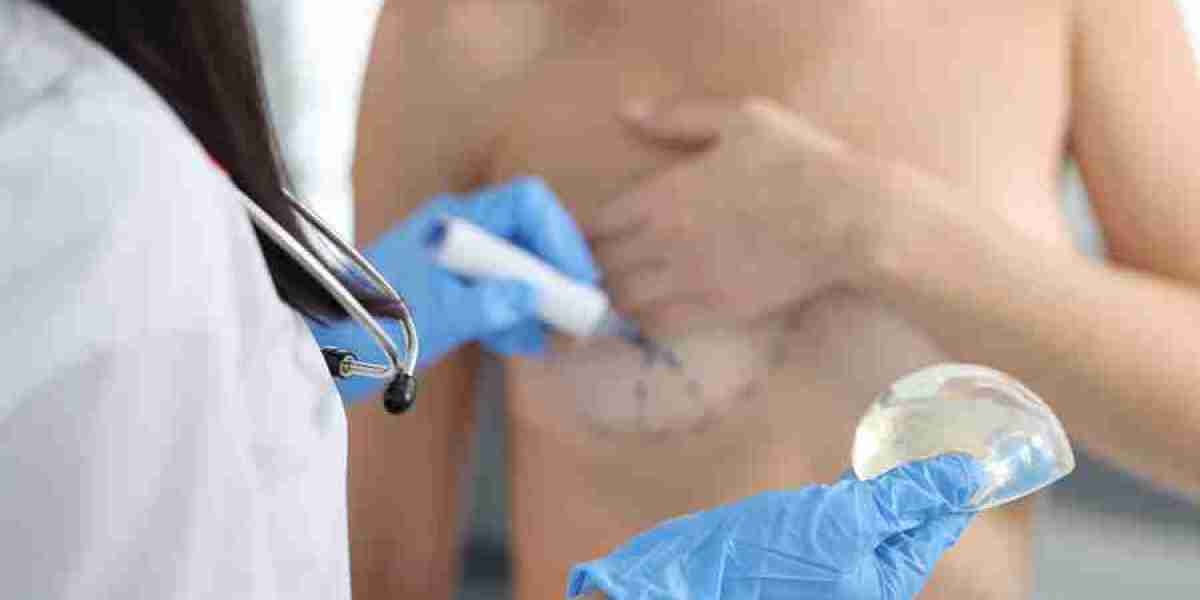Breast augmentation offers a transformative boost in self-confidence, but like any surgical procedure, it comes with considerations—including the potential risk of implant rupture. While rare, an implant rupture can occur years after the surgery and requires prompt attention. Those who’ve undergone Breast Augmentation in Islamabad can rest assured that most cases are manageable with early detection and professional care from certified surgeons in the region.
This comprehensive guide explains what happens when a breast implant ruptures, why it occurs, how it can be identified, and what steps to take for treatment in Islamabad.
What Is an Implant Rupture?
An implant rupture refers to a tear or hole in the outer shell of a breast implant. Depending on the type of implant used—saline or silicone—the symptoms and consequences differ:
Saline Rupture: The saline solution leaks out quickly and is absorbed by the body, leading to noticeable deflation of the breast.
Silicone Rupture (Silent Rupture): The silicone gel may remain trapped in the surrounding tissue, making it harder to detect without imaging.
Ruptures are not typically life-threatening but should be addressed by a medical professional promptly to maintain aesthetic balance and health.
Causes of Implant Rupture
While breast implants are durable and tested under stringent safety protocols, ruptures can happen due to several factors:
1. Trauma or Injury
A sudden impact to the chest—such as from a car accident or fall—can compromise the implant’s integrity.
2. Capsular Contracture
This occurs when scar tissue tightens around the implant, exerting pressure and increasing the risk of rupture.
3. Aging of the Implant
Implants are not lifetime devices. Most have a lifespan of 10 to 15 years, and aging materials may eventually weaken.
4. Manufacturing Defects
Though rare, certain batches may have defects despite strict quality control measures.
5. Surgical Technique or Instrumentation
Improper handling during surgery or implant placement can increase the risk of early rupture.
6. Mammograms or Biopsies
Improperly performed breast imaging procedures can occasionally rupture an implant.
Signs and Symptoms of a Ruptured Implant
The signs of rupture differ depending on the implant type:
Saline Implant Rupture Symptoms:
Sudden decrease in breast size or shape
Noticeable deflation
Asymmetry
Slight tenderness or discomfort
Silicone Implant Rupture Symptoms (Silent Rupture):
Subtle changes in shape or contour
Pain or tenderness
Swelling or lumps near the implant
Hardening of the breast
Numbness or tingling
Often, silicone ruptures are silent and detected only via MRI or ultrasound.
Diagnosis of Implant Rupture in Islamabad
Modern clinics in Islamabad are equipped with advanced diagnostic tools to detect ruptures accurately. Common diagnostic procedures include:
1. Ultrasound
Non-invasive and widely available, ultrasound can reveal inconsistencies in implant structure.
2. MRI (Magnetic Resonance Imaging)
MRI is considered the gold standard for detecting silicone ruptures and is often recommended every few years as a precaution.
3. Physical Examination
A skilled plastic surgeon can sometimes identify rupture symptoms during a routine checkup or follow-up visit.
What Happens After a Rupture Is Detected?
Upon confirmation of rupture, the next step is typically surgical removal and/or replacement. Options include:
1. Implant Removal Only
If the patient chooses not to replace the implant, it can be removed and the area closed, though the breast may appear deflated.
2. Implant Replacement
Most patients choose to have the implant replaced with a new one, possibly even switching type or size at this stage.
3. Capsulectomy (If Necessary)
In some cases, the surrounding scar tissue (capsule) is also removed to reduce risk of complications or infection.
Is Implant Rupture Dangerous?
Saline ruptures pose minimal health risk, as the saline is sterile and absorbed by the body. Silicone ruptures, while not toxic, require more cautious handling due to potential inflammation or scarring if silicone leaks into surrounding tissue.
In either case, early detection and prompt treatment are key to avoiding aesthetic or health-related complications.
Recovery After Implant Replacement
Recovery from implant replacement surgery is typically faster than the initial augmentation. Here’s what to expect:
Downtime of 5–7 days
Mild discomfort or swelling
Use of compression garments
Limited upper body activity for 2–3 weeks
Follow-up visits to monitor healing
Clinics in Islamabad offer guided recovery programs and support, making the process smoother and safer.
How to Prevent Implant Rupture
While some causes are unavoidable, the following practices help minimize rupture risk:
Choose high-quality implants approved by global safety standards
Undergo surgery with a board-certified plastic surgeon
Follow all post-surgery care instructions diligently
Schedule routine imaging (especially for silicone implants)
Avoid intense chest trauma or pressure
Maintain a healthy lifestyle to support skin and tissue integrity
When to Consider Revision or Replacement Surgery
Whether due to rupture, aging implants, or changing personal preferences, many women eventually consider revision surgery. You may want to explore this if:
Your implants are more than 10–15 years old
You notice changes in shape or feel
You desire a different size, type, or profile
You experience discomfort or asymmetry
Islamabad’s advanced aesthetic clinics offer tailored solutions with minimal downtime and natural-looking results.
Breast Implant Warranty and Follow-Up
Many implant manufacturers offer warranties covering rupture, often including partial or full replacement coverage. Patients should:
Keep all implant documentation
Understand the warranty’s scope and duration
Ask their clinic about registration and eligibility
Regular follow-ups with your plastic surgeon ensure continued satisfaction and safety.
Choosing the Right Surgeon in Islamabad
The success of any revision surgery—especially following rupture—depends on the experience of your surgeon. Look for:
Board Certification in plastic or cosmetic surgery
Years of experience in breast procedures
Before-and-after photos of past patients
Positive patient testimonials and reviews
Transparent consultation and pricing
Dynamic Clinic in Islamabad is among the most trusted names in breast augmentation and revision, known for its advanced technology and expert surgeons.
FAQs About Implant Rupture
Q: How long can I wait to replace a ruptured implant?
Saline ruptures can be addressed relatively quickly. Silicone ruptures should be treated as soon as detected to prevent tissue irritation.
Q: Can I change the implant type during replacement?
Yes. You can switch from saline to silicone or vice versa, or even consider a different size or profile.
Q: Will insurance cover implant rupture?
Cosmetic implants are typically not covered unless medically necessary. Some warranties offer partial financial support.
Q: Can rupture happen more than once?
Yes, though proper care and quality implants reduce the chances significantly.
Conclusion: Stay Informed, Stay Safe
While implant rupture may sound alarming, it’s a manageable and correctable issue. By choosing experienced professionals and staying informed about your implant health, you can enjoy the benefits of Breast Augmentation in Islamabad with confidence and peace of mind.
If you suspect a rupture or are nearing the age where implants may require replacement, consult a reputable clinic in Islamabad promptly. With the right care, your aesthetic goals and overall well-being remain fully protected.




